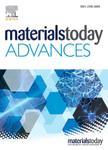版权所有:内蒙古大学图书馆 技术提供:维普资讯• 智图
内蒙古自治区呼和浩特市赛罕区大学西街235号 邮编: 010021

作者机构:Jilin Univ Coll Phys State Key Lab Superhard Mat Changchun 130012 Peoples R China Inst Basic Sci Ctr Multidimens Carbon Mat Ulsan 44919 South Korea Ulsan Natl Inst Sci & Technol UNIST Dept Mat Sci & Engn Ulsan 44919 South Korea
出 版 物:《MATERIALS TODAY ADVANCES》 (Mater. Today Adv.)
年 卷 期:2020年第8卷
核心收录:
基 金:Institute for Basic Science of South Korea [IBS-R019-D1] National Natural Science Foundation of China [91745203, 11404134]
主 题:Transition metal dichalcogenide Molybdenum disulfide Edge reconstruction Particle swarm optimization algorithm First-principles calculation
摘 要:The properties of an edge of a transition metal dichalcogenide (TMDC) sensitively depend on its atomic structure;therefore, knowing the exact structure is a precondition for predicting the applications of TMDC, such as in catalysis. Although some edge reconstructions of TMDCs have been reported in previous studies, a global search of TMDC edge structures and calculations of their stabilities are still absent. Here, we propose an approach to explore all possible edge reconstructions of a monolayer TMDC by employing the particle swarm optimization algorithm and first-principles calculations. Taking the most studied TMDC material, MoS2, as a representative, we have built a database of the edge structures of TMDCs. Including the five experimentally observed edges, the thirty-four most stable edges with various sulfur concentrations are predicted for the first time. The most stable edge structures of 1H-MoS2 in different environments along both the armchair and zigzag directions have been predicted and agree well with experimental observations. A specific edge of 1H-MoS2 in the database can be stabilized by modulating the chemical composition of the atoms, which offers an efficient way to tune the properties of TMDC nanostructures, such as TMDC quantum dots and/or nanoribbons. (C) 2020 The Author(s). Published by Elsevier Ltd.